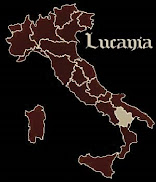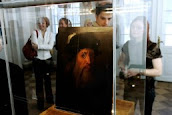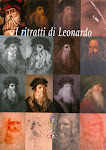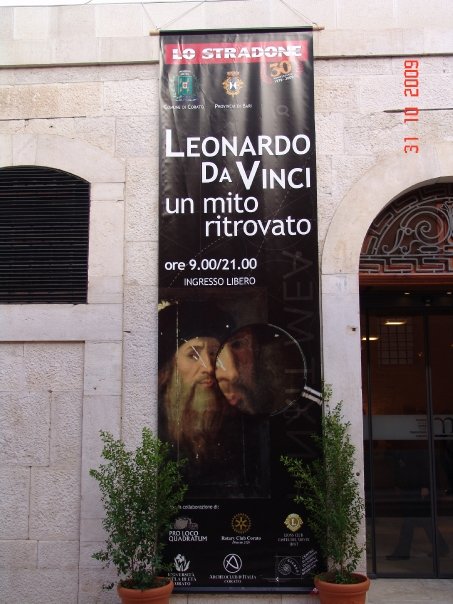
THE FACE OF LEONARDO DA VINCI
The facial representation in the painting found by Nicola Barbatelli is actually in phases of study by Gianni Glinni and a group of researchers, who are experts in Medieval Art at the University of Tallinn. Here we are presenting only a sneak preview of the notes Mr. Glinni has begun analysing and comparing (as you see in the above image). The hypothesis is whoever actually painted the painting had a model; the same face designed in 1510 by Francesco Melzi. As we can easily detect in the combination empirically created within the notebook at the bottom, considered are two faces which seem extraordinarily congruent. “In particular, Mr. Glinni writes, it’s the eyes, nose, mouth and the furrow beside it, as well as the hairline of the beard that appear all so similar, even a superimposition would be unnecessary.” This simply cannot be dismissed as being coincidental. The tri-dimensional reconstruction of the two faces, pertains to the drawing done by Melzi, the other being the one found by Barbatelli. This enables by means of comparing various parameters, the establishing of an adequacy under a morpho-geometric profile. We may anticipate with all certainty that the newly found Leonardo da vinci painting is depicting a familiar face.
Il VOLTO DI LEONARDO La raffigurazione del volto riprodotto sul dipinto rinvenuto da Barbatelli è attualmente in fase di studio da parte dell’ing। Gianni Glinni e di un gruppo di ricercatori esperti in arte medievale dell’Università di Tallinn। Presentiamo in anteprima gli appunti di Glinni che hanno avviato la ricerca. La ipotesi è che colui che ha dipinto il quadro ha avuto come modello lo stesso volto disegnato nel 1510 da Francesco Melzi. Come si può facilmente notare dall’accostamento fatto empiricamente sul quaderno, i tratti dei due volti sono straordinariamente congruenti. In particolare, scrive Glinni, la proporzione degli occhi, naso, bocca, solco affianco alla bocca, attaccatura della barba sono talmente simili da essere sovrapponibili. Non può ovviamente essere un caso. La ricostruzione tridimensionale dei due volti, quello del disegno di Melzi e quello del dipinto di Barbatelli, permetterà tramite un confronto dei vari parametri di stabilirne la congruità sotto un profilo morfo-geometrico. Si può comunque anticipare con sufficiente sicurezza che si tratta dello stesso volto.













No comments:
Post a Comment